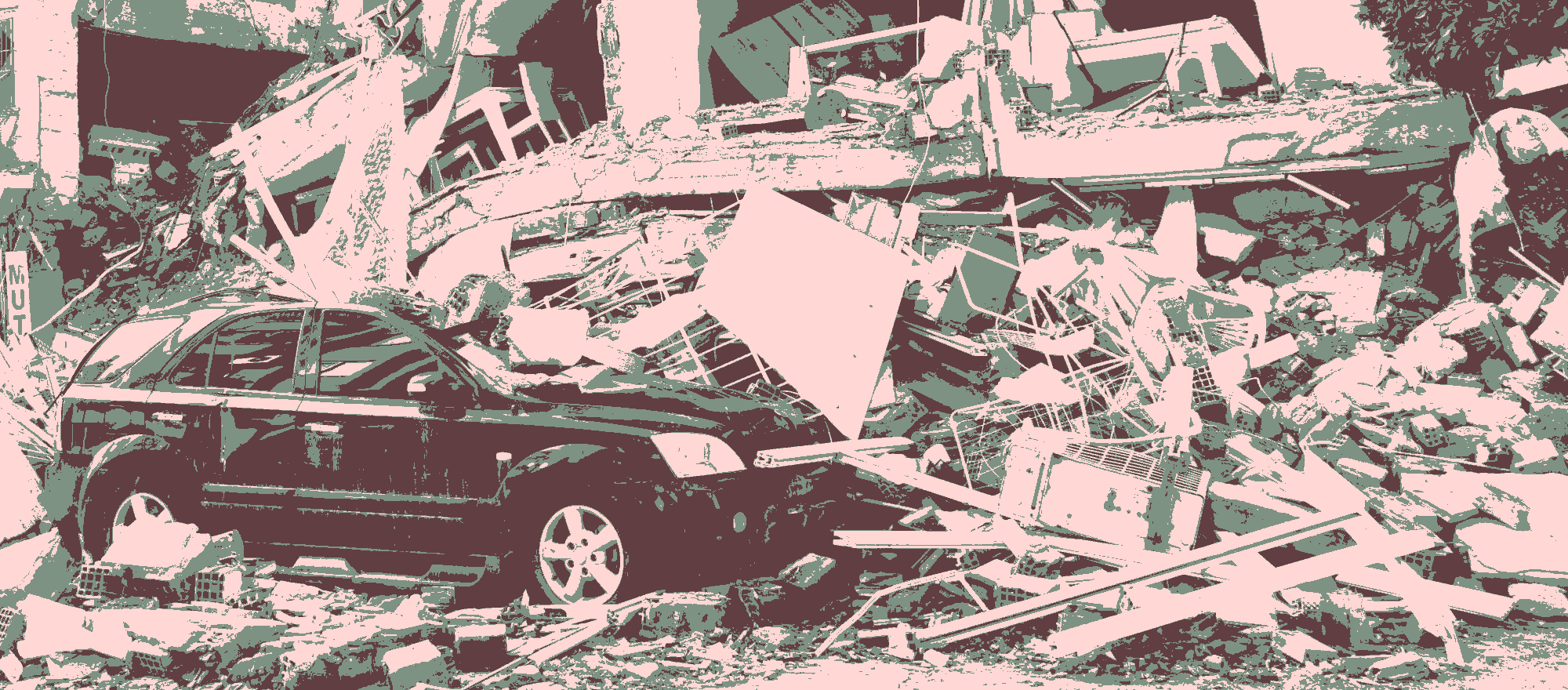Disaster Risk Reduction

A short think piece contributed to the Stockholm+50 process (June 2023)
| Hari Srinivas | |
| Viewpoint Series C-049. |
Abstract
A rights-based approach to disaster risk reduction centers on the recognition and protection of human rights as a fundamental framework for mitigating and responding to disasters. It emphasizes the empowerment and inclusion of vulnerable communities, ensuring their active participation in decision-making processes, and respecting their dignity and agency throughout all phases of disaster management.
By prioritizing the fulfillment of human rights, such as access to information, healthcare, housing, and livelihoods, this approach aims to build resilient societies capable of minimizing the impact of disasters and fostering a just and equitable recovery for all affected individuals, leaving no one behind in the face of adversity.
A family in Banda Aceh after the 2004 Indian Ocean Tsunami |
Over the past 70 years, the world's population has risen by 87%, but the population living in flood-prone river basins has increased by 114% and typhoon-exposed coastlines by 192%. More than half of the world's urban populations are lying in seismic zones.
Disasters happen when people living in vulnerable areas are exposed to a natural (or man-made) hazard. Disasters are an indicator of developmental and environmental failures. Such events are also influenced by other factors such as poverty and inequality, unsustainable production and consumption patterns, or poorly managed cities.
Land use changes that are eroding natural buffers protecting communities from hazards also affect their capacity to recover from disasters. Other environmental changes, such as water scarcity, climate change, biodiversity loss and chemical pollution increase the future risk of disasters and create new challenges for vulnerable communities, emphasizing the need for disaster risk reduction (DRR).
The genesis for a rights-based approach to DRR began with the Hyogo Framework of Action, adopted in Kobe, Japan (2005) that advocated a shift from disaster management to DRR: "Disaster risk is increasingly a global concern and its impact and actions Epoints to a future where disasters could threaten global economic growth." Advancing this concept, the Sendai Framework of Action, adopted in Sendai, Japan (2015), includes, for the first time, an explicit reference to human rights, calling for DRR activities to be implemented while promoting and protecting all human rights.
Human rights are concerned with people's critical freedoms. It requires both protecting people from disaster risks and empowering them to take charge of their own lives. Rules of law and democratic governance implies a 'top-down approach', while empowerment underscores the role of people as key actors and implies a 'bottom-up' approach. Both approaches emphasize that people must be protected when facing disasters.

Natural processes and human modification of hthe environment contribute to majority of the risk factors (many times a comination of the two sources) that result in the disaster events we face on a daily basis.
A coherent disaster risk reduction policy, focusses on two key elements: disaster prevention and disaster preparedness.
From a human rights perspective, these two policy priorities entitle empowerment and obligation:
|
Often, disaster impacts also result in serious infringements of human rights (for example, access to aid). DRR issues are also influenced by legal systems that protect human rights and this imposes positive obligations on governments to undertake legislative and governance measures to prevent harm from disasters.
DRR policies, strategies and programmes should target inequality and exclusion and be guided by a human rights-based approach, since disasters are consequences of natural hazards interacting with vulnerable socio-environmental conditions. It calls for communities to be empowered to build a resilient life, while holding governments accountable, and obliging them to provide the necessary aid and assistance before and after a disaster.
But challenges remain - we need to ensure DRR initiatives are implemented through a rights-based approach, and clarify how human rights relevant to DRR are implemented in practice. Such an approach reminds us that increased accountability and empowerment for DRR will remain a priority for the future.
|
|
|
|
Return to Human Security Contact: Hari Srinivas - hsrinivas@gdrc.org |
